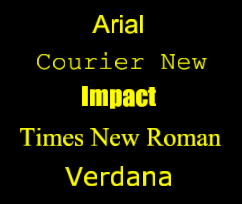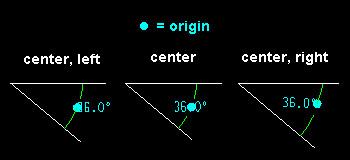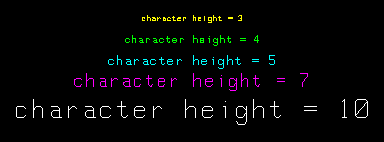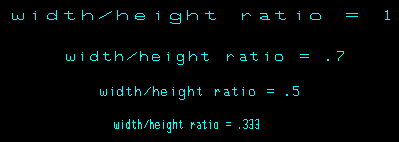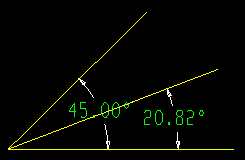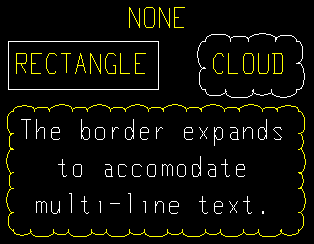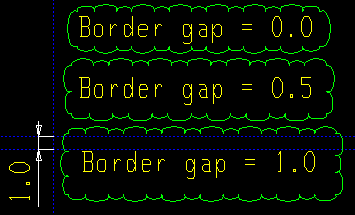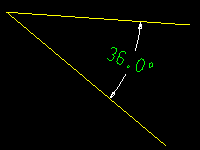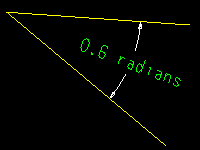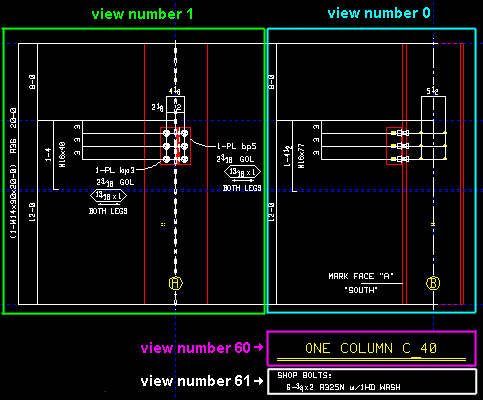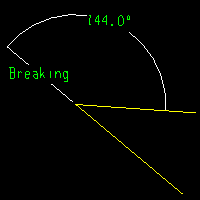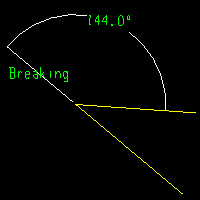The Edit Angle Dimension window ( Drawing Editor )
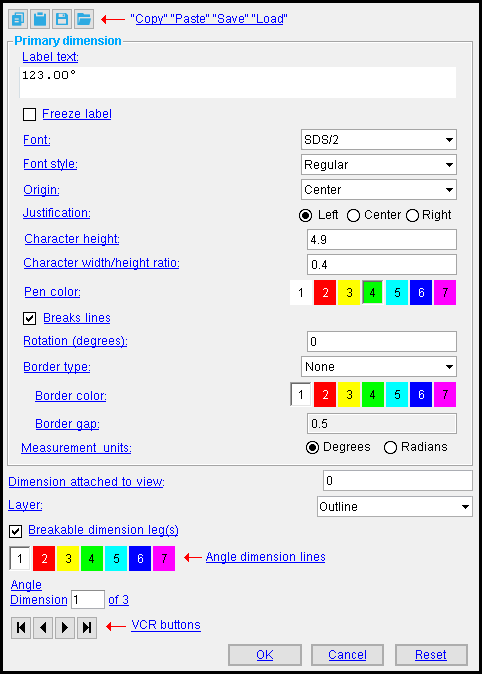
The Edit Angle Dimension window opens when you :
- Double-click an angle dimension's label or dimension line or leg
- Angle Dimension Edit
- Angle Dimension Edit All
Note : If you opened this window using Angle Dimension Edit All or by a multi-edit , the contents of many fields may be gray, which indicates mixed entries but does not prevent you from editing that field.
Also see :
- Angle dimensions (topic)
- Angle Dimension Add
- Display measurement unit for angle dimensions ( Fabricator > Detailing > Dimension Settings > )
- Angle dimension precision ( Fabricator > Detailing > Dimension Settings > )
- Dimension labels font (affects auto detailing)
- Dimension labels style (affects auto detailing)
- Grayed out fields (indicate mixed entries or that the field is disabled)
- Multi Items Edit (related window)
page 1 | contents | objects > angle dims > | objects -- angle dims | top
![]() " Copy " " Paste " " Save " " Load " buttons :
" Copy " " Paste " " Save " " Load " buttons :
page 1 | contents | objects > angle dims > | objects -- angle dims | top
------ Primary dimension ------
Key Bindings for Text Entry
(when the cursor is in the text-entry area)key action bound to key Alt +num,
[Num Lock] oninserts characters 0160 to 0255.
Enter creates a line break Ctrl +a selects all text Ctr+Enter executes " OK " Ctr+c * copies selected text Ctrl+x * cuts selected text Ctrl+v * pastes cut or copied text Tab moves focus to next widget Esc executes " Cancel " * = applies to all text entry fields.
Freeze label: ![]() or
or ![]() . This applies if you have changed the automatically calculated " Label text ."
. This applies if you have changed the automatically calculated " Label text ."
If this box is checked (
), the automatically calculated " Label text " number that you changed will remain as changed after you press " OK ." Exception 1: If you change the " Measurement units ," the " Label text " numerical value will be recalculated. Exception 2: If you move the angle dimension to a different quadrant, the " Label text " numerical value will be recalculated.
If the box is not checked (
), the automatically calculated " Label text " number that you changed (or that Edit Angle Dimension entered) will automatically be calculated again, when you press " OK ."
Note 1: If you delete the automatically calculated number entirely, then replace it with text, you effectively freeze the " Label text ." The choice you make to " Freeze label " will not matter. The number will not come back until you manually type in a new number.
Note 2: If you type in non-numerical text before and/or after the number, that text will remain after you press " OK ," regardless of the choice made to " Freeze label ."
Font: Any font that is listed can be selected for the " Label text ."
|
For a TrueType font , such as any of those shown here, a " Character width/height ratio " of ' 0.6 ' renders the font at its native width. |
Be sure to also choose the " Font style " that you want. The " Character height " sets the font size. If you select the ' SDS2 ' font, be aware that the " Pen color " affects the thickness of the font when it is plotted.
Font style: The style (' Bold ' or ' Bold Italic ' or ' Italic ' or ' Regular ') of the selected " Font ." Different fonts may have different styles available to them.
Available font styles are listed alphabetically in the font style list box , and the first style that is listed is selected by default. You may, instead of using the default, prefer to choose ' Regular ', which is generally the most popular style for a particular font. ' Regular ' is the only choice that is available for the ' SDS2 ' font. To adjust the stroke thickness of the ' SDS2 ' font, you can change the " Pen color ."
Also see: " Dimension labels font " and " Dimension labels style " in Home > Project Settings > Fabricator > Detailing > Drawing Presentation > the " Fonts " tab determine the font and font style that are applied automatically to angle dimension labels that are generated during automatic detailing .
Origin: Lower left or Left center or Upper left or Lower center or Center or Upper center or Lower right or Right center or Upper right . The origin ( o ) of a dimension label is highlighted along with the dimension label when the dimension label is selected.
|
Examples: To orient the text block so that its origin point is at its center left, select ' Center left '. To center the text block over its origin, select ' Center '. To place the origin to the center, right of the text block, select ' Center, right '.
Tip: Instead of using " Origin " to reposition an angle dimension label, you can Shift-drag the dimension label to a new position.
Justification: Left or Center or Right . This applies when multiple lines have been entered as the " Label text ."
|
Also see: To reorient a single line of text with respect to its origin, reset the " Origin ."
Character height: The height ( in millimeters ) of letters/numbers that make up the angle dimension label. This value is independent of the " Drawing scale " of your current drawing. Assuming that the sheet that this drawing will eventually be placed on has a scale of 1:1 and you do not re-scale the labels and the printer does not adjust the scale, this will be the actual height of characters on the plotted sheet.
|
Font dependencies: This applies to whatever font is selected as the angle dimension " Font ," regardless of whether that font is a TrueType font or the ' SDS2 ' font.
Character width/height ratio: The width/height of the characters that make up the angle dimension label.
|
Font dependencies: For a TrueType font, a ratio of ' 0.6 ' renders that font at its native width. A ratio larger than ' 0.6 ' stretches the font. A ratio less than ' 0.6 ' compacts the font. For the ' SDS2 ' font, ' 0.4 ' is the default choice.
Pen color: 1 or 2 or 3 or 4 or 5 or 6 or 7 . No button is pressed if you are editing multiple angle dimensions that are drawn with different pens. This only affects the angle dimension label, not the angle dimension line or, if applicable, its legs.
|
|
|
The selected button sets the on-screen display color of angle dimension labels and, if you are using the 'SDS2 ' font , it sets the plotted thickness (though not the displayed thickness) of that font. |
For a TrueType font, the " Pen color " affects the display color of the text while you are in the Drawing Editor , but does not affect the plotted appearance of the " Font " so long as all pens in Line Weights are set to print in black. By default, all pens in Line Weights are set to print in black.
For the ' SDS2 ' Font, the pen color sets the stroke weight (thickness) of the angle dimension characters. Line Weights assigns a particular thickness to each " Pen color ."
Breaks lines: ![]() or
or ![]() . The setup options " Break material lines at label interference " or " Break dimension lines at label interference " must be checked for this option to apply.
. The setup options " Break material lines at label interference " or " Break dimension lines at label interference " must be checked for this option to apply.
|
If this box is checked (
), this angle dimension label will break a line (for which " Breakable " is checked), a polygon line (for which " Breakable " is checked), or a dimension leg (for which " Breakable dimension leg(s) " is checked) at the location where that line, polygon line or dimension leg intersects this angle dimension label.
If the box is not checked (
), lines, polygon lines or dimension legs will not be broken when they intersect this angle dimension label. If the line is thin and the angle dimension label is thick, the label will be legible.
Rotation (degrees): A positive or negative (-) number from 360 to -360 degrees. Tip: If you grab the dimension label and rotate it as shown in the example below, the " Rotation (degrees) " will be updated on this window.
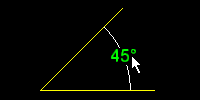 |
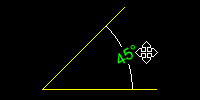
|
| When you grab an angle dimension label to rotate it, a 4-way mouse pointer indicates that directional movement is unconstrained. | |
An entry of ' 0 ' (zero) orients the lettering horizontally.
A ' positive number ' of degrees rotates the label counterclockwise from horizontal.
A ' negative (-) number ' of degrees rotates the label clockwise from horizontal.
Border type: None or Rectangle or Cloud .
|
Note: A cloud border and rectangular border is part of the dimension, not an object that is distinct from the dimension. This means, for example, that you cannot select cloud borders with the Selection Filter set to ' Clouds '. Nor can you select a rectangular border with the Selection Filter set to ' Lines '. Unless you Explode the dimension, the dimension and its border are always selected together.
Border color: 1 or 2 or 3 or 4 or 5 or 6 or 7 . No button is pressed if you are editing multiple dimensions whose borders are drawn using different pens.
|
|
| If you use the defaults for Line Weights , the choice made here sets the thickness of the border (as well as its on-screen display color). |
Border gap: A distance (in the primary dimension " Units "). In the example below, the gap is measured using Add Dimension .
|
Note: You enter a " Border gap " of ' 0.5 ' inches and your " Drawing scale " is ' 1 ' (Base 12). The actual gap on the plotted drawing will be 1/12 x 0.5 = 0.04167 inches. This is different than " Character height ," which sets the actual height of characters in the plotted drawing.
Measurement units: ![]() Degrees or
Degrees or ![]() Radians . For this switch to work, the " Label text " needs to have a number entered to it. That number will be recalculated if this setting has changed when you press " OK ."
Radians . For this switch to work, the " Label text " needs to have a number entered to it. That number will be recalculated if this setting has changed when you press " OK ."
|
'
Degrees ' indicates that the unit of measure for a number entered to " Label text " is degrees. If you switch this from ' Radians ' to ' Degrees ' then press " OK ," that number will be recalculated as described in the warning below.
'
Radians ' indicates that the unit of measure for a number entered to " Label text " is radians. If you switch this from ' Degrees ' to ' Radians ' then press " OK ," that number will be recalculated as described in the warning below.
Warning: If you change the " Measurement units ," a number entered to " Label text " will be recalculated. This is true regardless of the number and regardless of the choice made to " Freeze label ." The recalculation is based on the angle between the two lines that this angle dimension is drawn between. The recalculation is not a conversion of the number -- it is a recalculation of the number.
Setup: Home > Project Settings > Fabricator > Detailing > Dimension Settings > " Display measurement unit for angle dimensions " sets the choice that is made here when an angle dimension is first added.
Also in setup: Home > Project Settings > Fabricator > Detailing > Dimension Settings > the " General " tab > " Angle dimension precision " specifies the number of places after the decimal point to which an angle dimension is calculated. Since 2π radians = 360°, you will probably want more places after the decimal point when the " Measurement units " is ' Radians ' as opposed to when it is set to ' Degrees '.
page 1 | contents | objects > angle dims > | objects -- angle dims | top
------ Options that apply to the entire dimension ------
Dimension attached to view: A number designating the view that this angle dimension is attached to. This applies mainly to member details . For instance, a column detail may have a view of face A, face B and face C. It may also have various section views (Section A-A, Section B-B, Section C-C). All graphical objects that are in a particular view are assigned the same number. You can also find multiple views on a submaterial detail .
Assigning the correct number to an object (angle dimension, dimension, line, weld symbol, label, etc.), prevents Shorten and Unshorten problems on submaterial details and member details .
|
To show a view's number, you can add the X-Y-Z Display to your toolbar. An alternative decoration you can add to display view numbers is the X-Y Dual Show/True Display .
|
|
In the Drawing Editor , the X-Y-Z Display shows the view number that the point location target ( |
Troubleshooting: If you Unshorten a drawing then Shorten , only to find that objects are repositioned in a way that seems wrong, the problem might be that the objects are attached to a view that is not the view that they should be attached to. A good troubleshooting method is to select all of the objects that you believe should be attached to the same view, then right-click ( Menu ) and choose " Edit " on the menu . This will open the Multi-Items Edit window. Look at the " Attached to view " field on that window. If that field is gray (shows no view number), then that field has mixed entries due to objects in your selection having two or more different view numbers. Entering the desired view number to the " Attached to view " multi-edit field assigns all objects in your selection that one view number.
View number assignment is fairly random. While view numbers assigned during auto detailing are generally the same as the numbers assigned to views in member isolation (or material isolation's edit views mode ), there are cases where that general one-to-one correspondence will not hold. Also, while the main view of a member detail is view 0, the other views are assigned numbers as they are added, and since the order in which views are added is arbitrary, there is little correspondence between a view's number and its type.
How can objects be assigned wrong view numbers? When a user adds an object to a drawing on which there are multiple views (a member detail or a submaterial detail), it is the responsibility of that user to ensure that the object is attached to the correct view. That sounds like an easy thing to do, but it isn't always so simple. Take, for example, a pointer . When a user adds a pointer using Objects > Pointers > Add , the user does not see the Pointer Edit window and therefore does not see the " Attached to view " entry field. Pointers can also be added using Paste , Paste at Original Location , Paste Repeatedly , Paste Special , Paste to Several , Add Standard Detail , Add Standard Detail to Several , Add Weld Combo , Hole Sym Combo , Label Combo , etc. Each of these tools is a different way for users to add a pointer to a wrong view.
Layer: The drawing layer that the angle dimension you are adding or editing will be placed onto when you press " OK " to close this window. If that layer happens to be hidden (not marked " Show "), the angle dimension will disappear after the first Redraw .
![]()
Defaults: For an Dimension Add Angle operation, the default selection (
) is the layer that was selected on the Layer Panel before you began the operation. For an Dimension Edit operation, the default selection is the layer that the dimension is currently on.
Breakable dimension leg(s): ![]() or
or ![]() . The setup option " Break dimension lines at label interference " must be checked for this option to apply. If that setup option is turned off (not checked), then the dimension legs are never broken, no matter what choice you make here.
. The setup option " Break dimension lines at label interference " must be checked for this option to apply. If that setup option is turned off (not checked), then the dimension legs are never broken, no matter what choice you make here.
|
If this box is checked (
) and Home > Project Settings > Fabricator > Detailing > Dimension Settings > the " General " tab > " Break dimension lines at label interference " is checked and this angle dimension has a leg, that leg is broken (made invisible) where it crosses a label (for which " Breaks lines " is checked) or dimension label (for which " Breaks lines " is checked).
If the box is not checked (
), the dimension leg is continuous through any labels or dimension labels it crosses. If the dimension leg is thin and the label is thick, the label will be legible.
Defaults: " Breakable dimension leg(s) " is checked by default, regardless of the choice in setup and regardless of whether or not the dimension is added by the user or generated by auto detailing.
Angle dimension line pen: 1 or 2 or 3 or 4 or 5 or 6 or 7 . No button is pressed if you are editing multiple dimensions that are drawn with different pens. This only affects the angle dimension's line and legs, not the label.
|
|
| The selected button sets the printing pen number (and on-screen display color) of the dimension lines. Line Weights assigns a printing thickness to each of the seven pens. |
For when you edit one angle dimension and multiple angle dimensions are in the drawing :
Angle dimension _ of __ ( not applicable to Add or multi-edit ): The number of the one angle dimension you are editing and the total count of all angle dimensions in your current drawing. You can use the VCR buttons to select a different dimension and edit it while still on this window. When a dimension on a shown layer is selected, it is displayed in green. The selected dimension must be on a shown layer for it to be shown.
|
|
| VCR buttons (first-previous-next-last) for selecting an angle dimension to edit. |
Note: If you change to one angle dimension, then select a different angle dimension number, the first angle dimension remains changed even if you press " Cancel " on this window.
page 1 | contents | objects > angle dims > | objects -- angle dims | top
To close/reset this window :
![]()
![]()
![]()
"OK" (or the Enter key) closes this window and completes the operation you are performing. Your changes are not written to disk until you Save your current drawing.
Note: After making changes to this window and pressing " OK ," you can still undo your changes by using Revert or Undo . If you Save to make your changes permanent, you can no longer Revert , but you can still Undo .
"Cancel" (or the Esc key or the ![]() button) closes this window without saving any of the changes you have made. " Cancel " only cancels the changes made to the dimension whose number is currently selected as the " Dimension _ of __ ."
button) closes this window without saving any of the changes you have made. " Cancel " only cancels the changes made to the dimension whose number is currently selected as the " Dimension _ of __ ."
Tip: Although " Cancel " does not cancel changes made to dimensions previously edited on this window, Undo (after you have closed this window) does undo all those changes.
"Reset" undoes changes made to the dimension currently selected as the " Dimension _ of __ ." This window remains open.
page 1 | contents | objects > angle dims > | objects -- angle dims | top
